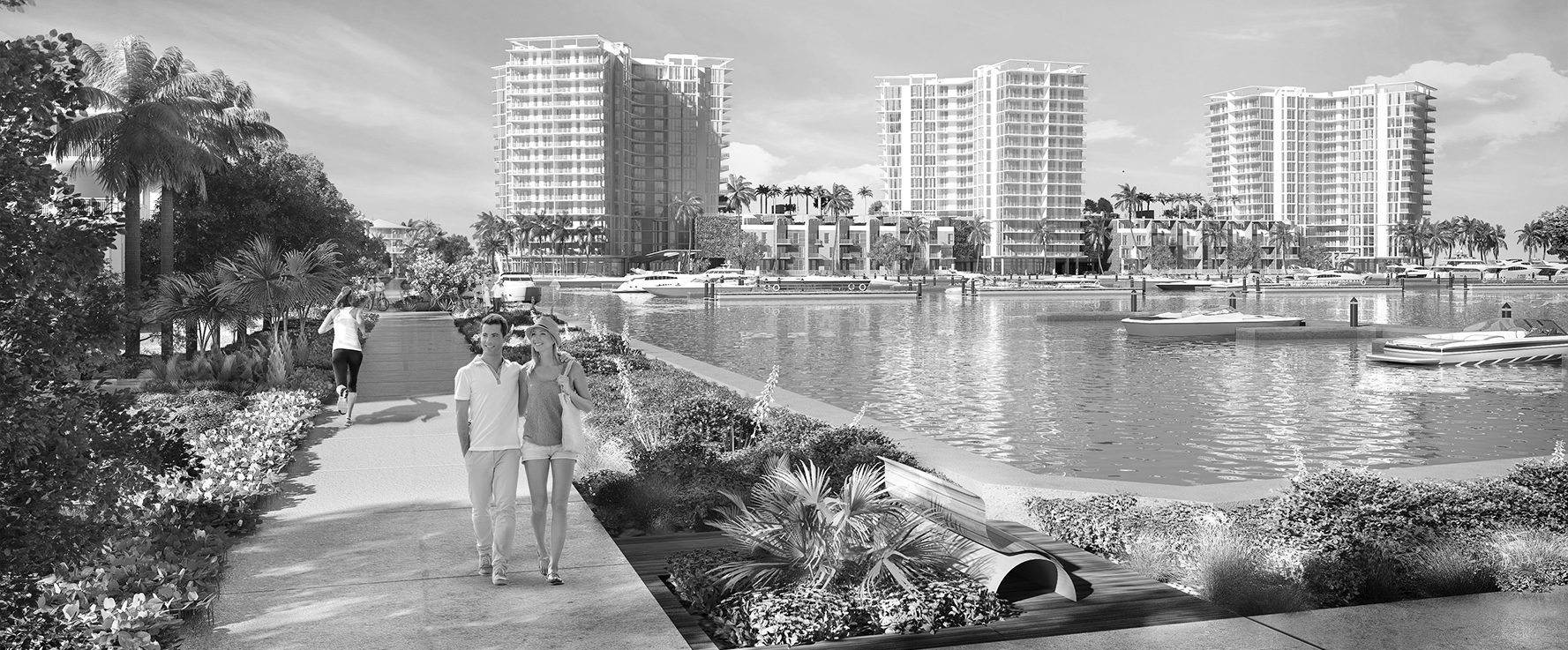Top Projects That Will Reshape Tampa
Florida’s West Coast is in the middle of a massive transformation. Millions of square feet of new commercial and residential space are reshaping the metro’s skyline.
Boosted by strong demographics and above-trend employment gains, Tampa was among the fastest-growing multifamily markets in the U.S. when the coronavirus pandemic began to strengthen its grip on the country’s economy. Despite the disruption caused by the statewide lockdown and shelter-in-place order, large real estate and infrastructure projects not only moved forward but even accelerated due to low traffic volumes. Construction was deemed essential across Florida, which created a silver lining for several transformative developments.
We’ve put together a list of projects that have the potential to redesign the metro for future generations. Both private developers and local authorities have billion-dollar projects in the works, which are set to change Tampa’s skyline.
1. WESTSHORE MARINA DISTRICT
Nestled between Tampa and St. Petersburg, the 52-acre master-planned project will reshape the Tampa Bay area. Plans for the $600 million development call for a 1,750-unit residential component, shops, offices, restaurants, nearly 2 miles of waterfront parks and walking trails, as well as a 150-slip, deep water marina for vessels up to 100 feet.
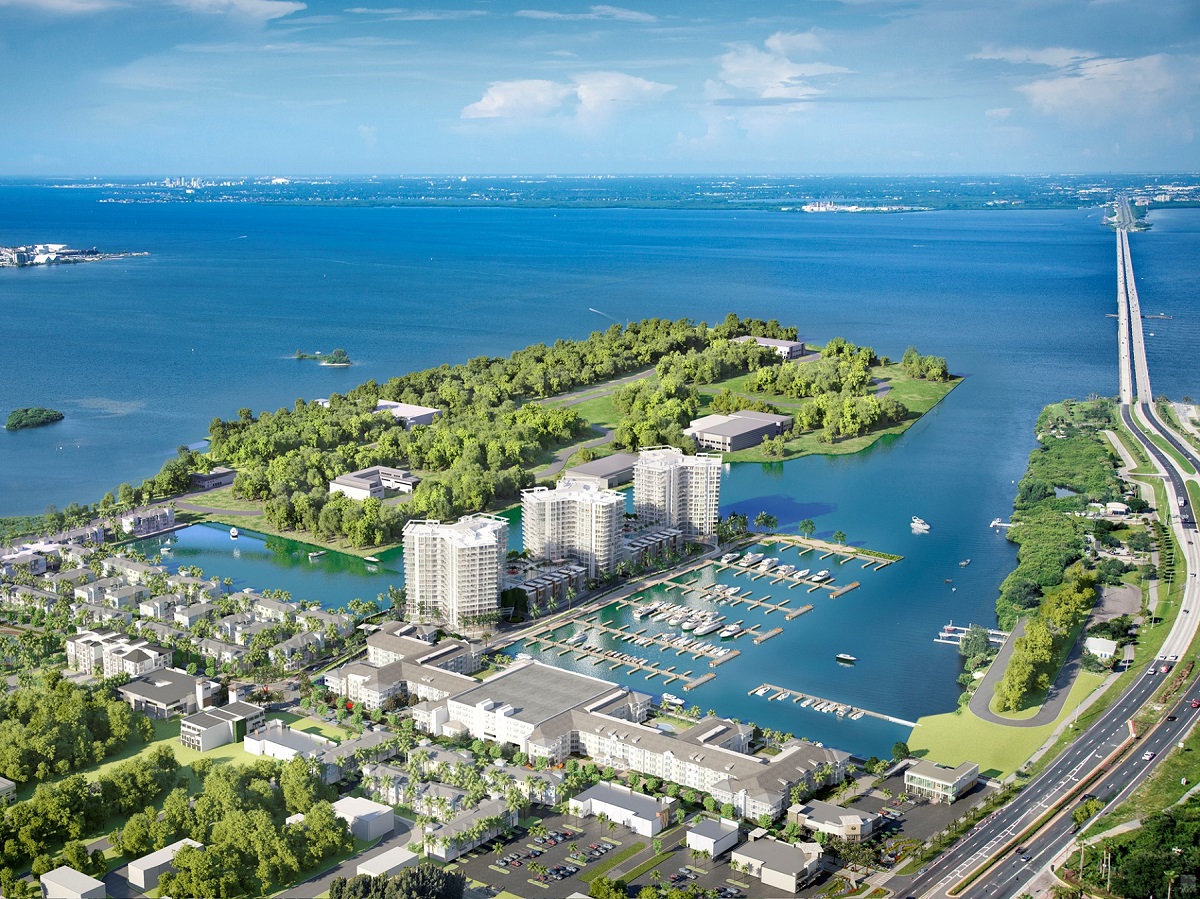
Fort Lauderdale-based developer BTI Partners and its associates are behind this new western gateway to Tampa. At the end of February, BTI broke ground on Marina Pointe, a component of the Westshore Marina District that includes three residential towers, the marina and a retail center. The first of the 16-story condominium buildings is expected to open in 2022, with 40 percent of the units already presold. Other elements of the luxury mixed-use community are also moving forward. BTI Partners intends to deliver the retail component of the district, Marina Landings, later this year.
To accommodate growth in this waterfront area, several infrastructure changes and investments were needed. The Tampa Hillsborough Expressway Authority is investing $220 million in the Selmon Extension, a roughly 2-mile toll lane, and BTI Partners has spent close to $10 million for several road improvements in and around Westshore Marina District, according to Scott Andersen, vice president for BTI Partners’ Marina Pointe project.
“Simply put, Westshore Marina District is injecting life into South Tampa, where we are now starting to see a wave of development along Westshore Boulevard. The demand for housing in this area will continue to grow in the next 10 years, so developers will become creative to provide new products and the local government will continue to invest in infrastructure to accommodate that growth,” Andersen told Commercial Property Executive.
2. MIDTOWN TAMPA
Another area undergoing a dramatic transformation is the intersection of Interstate 275 and Dale Mabry Highway. The Bromley Cos.’ Midtown Tampa is connecting Westshore and downtown with another central neighborhood. At full build-out, the $500 million urban development is set to include 1.8 million square feet of retail, residential, hospitality, entertainment and office space.
Midtown Tampa is on track to open prior to the February 2021 Super Bowl at Raymond James Stadium, half a mile away, according to Bromley Cos. CEO Nick Haines. The retail portion of the project is 80 percent leased, with Whole Foods, REI Co-op, True Food Kitchen, Burtons Grill & Bar, Shake Shack and Joffrey’s Coffee & Tea Co. among the tenants. In March, construction crews topped out two buildings: Midtown One, a $72 million, 151,845-square-foot speculative office building built in partnership with Highwoods Properties, and a dual-branded hotel developed with Concord Hospitality. Work is also underway at the 390-unit luxury NOVEL Midtown by Crescent Communities.
“Across the 22 acres of Midtown Tampa, everything we’ve built is 100 percent new. It’s basically the size of more than 16 football fields. We’ve essentially created an entirely new city,” Haines said.
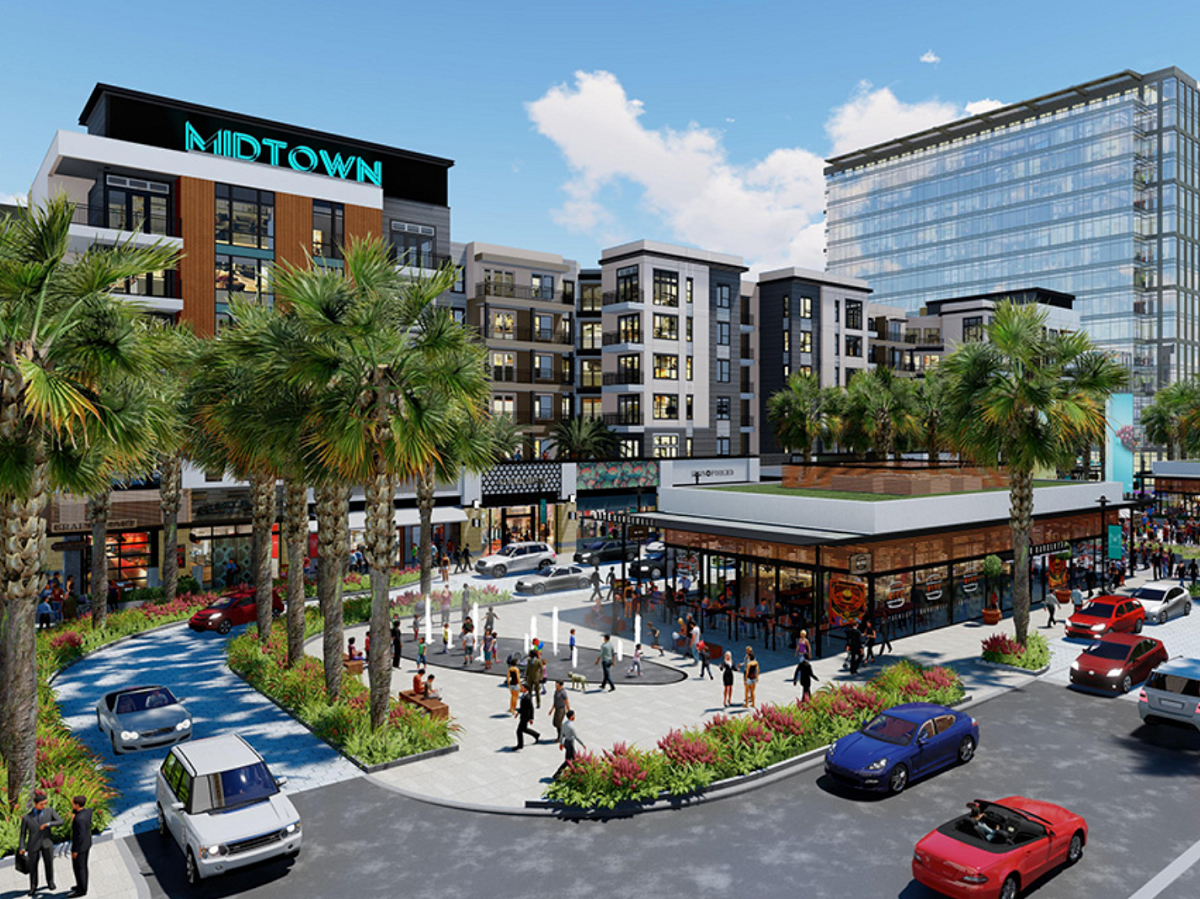
Coordinating the construction work on a project of this scale is no easy feat. Eleven buildings are rising up at the same time with help from four co-developers, four contractors and dozens of commercial tenants. “The closing of all the construction financings on such a massive project was a challenge. We worked with 10 law firms, four different banks and six different equity providers, and secured $350 million in financing,” Haines added.
Haines is convinced that Tampa Bay is growing into an attractive destination for Millennials and Gen Z residents. “With Midtown as a centerpiece that connects two of the city’s busiest districts, we expect to see expansion of the entire region for many decades to come,” he concluded.
3. WATER STREET TAMPA
Known as the largest downtown real estate development underway in the U.S., the $3 billion Water Street Tampa redevelopment is a massive project revitalizing the metro’s core and connecting its central business district with the waterfront. The 56-acre neighborhood is the first in the world to achieve the WELL Design & Operations designation.
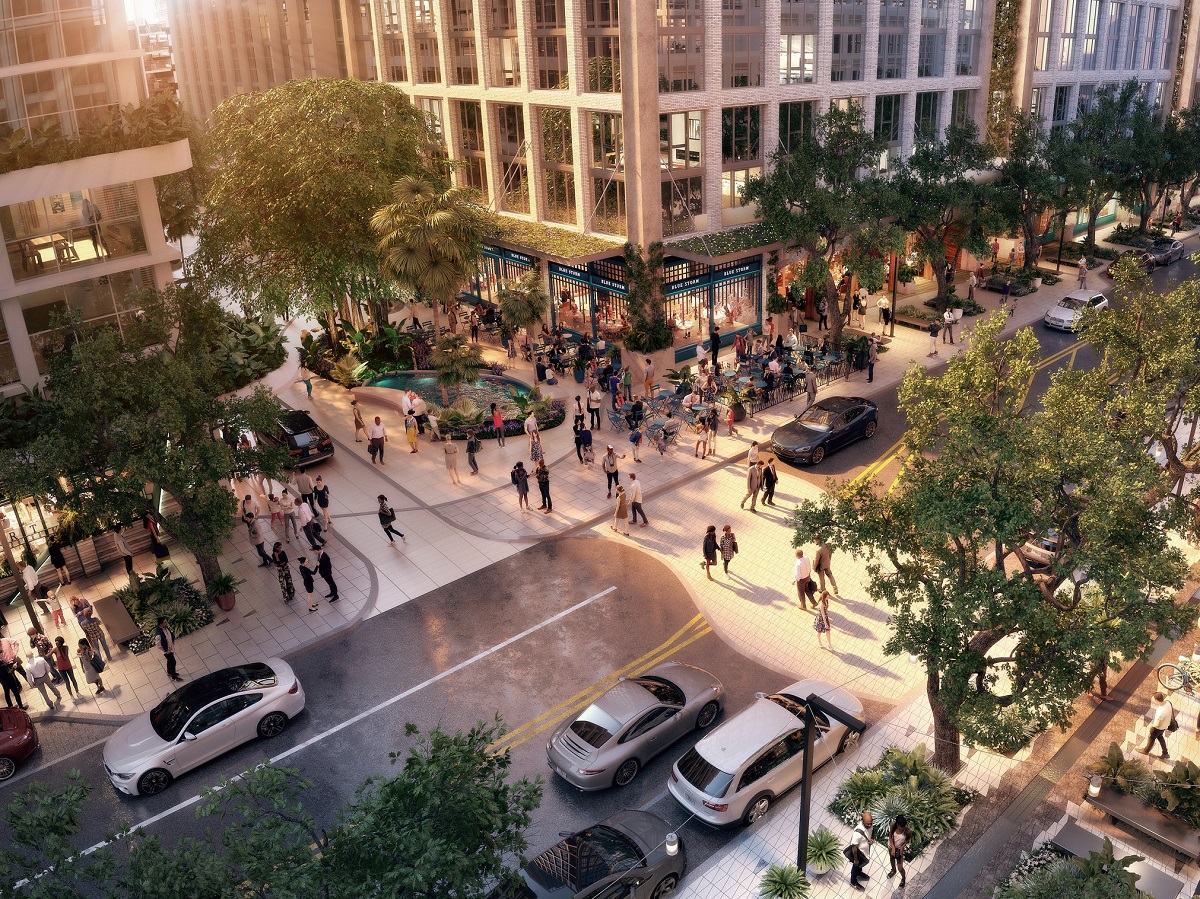
When completed in 2027, Strategic Property Partners’ 9 million-square-foot Water Street Tampa is set to include two hotels, 3,500 residential units, 1 million square feet of cultural and retail space, 2.6 million square feet of office space and 13 acres of public space. The megaproject is being built in a joint venture with Microsoft founder Bill Gates and Tampa Bay Lightning owner Jeff Vinik.
4. UPTOWN DISTRICT
Another project that has the potential to impact businesses across Tampa Bay is the transformation of the University Mall area into a research village. Uptown District includes 25,000 acres in North Tampa, bound by Busch Boulevard to the south, Bearss Avenue to the north and interstates 75 and 275 to the east and west; it also includes parts of the city of Tampa, Temple Terrace and unincorporated Hillsborough County. “The project will bring innovation to an area that has not experienced the economic growth of the Tampa Bay area,” said Bob Rohrlack, president & CEO of the Tampa Bay Chamber of Commerce.
And innovation is not the only ingredient that leads to evolution. Drawing inspiration from others’ best practices can also boost a community. Business leaders from the Tampa Bay region travel regularly to other cities to learn what those municipalities are doing right and where they fall short.
“We have been to several cities, seeing how light rail has helped the city prosper. The Achilles’ heel for Tampa Bay is our transportation system. While we must improve our roadways, we need to be able to have choices that enable the residents to get to work easier without hours of delays due to traffic,” Rohrlack said.
5. STREETCAR EXTENSION
Connecting downtown Tampa and Water Street Tampa to the Ybor City historic district, the 2.7-mile long streetcar transportation network has been mainly used by tourists. The City of Tampa intends to extend the system by 1.3 miles and transform it to better serve the mobility needs of residents, workers, visitors and students.
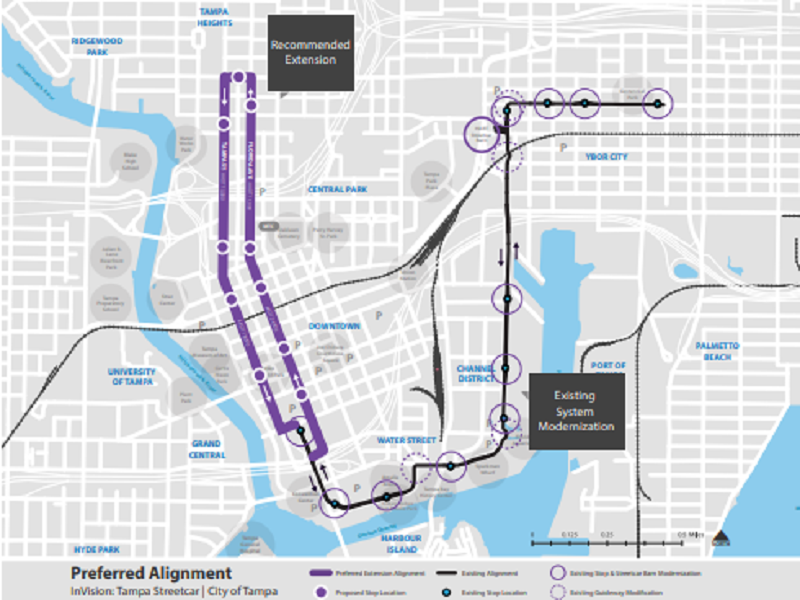
“The City’s investment into the streetcar system will do more than enhance downtown mobility. It will fuel economic growth by promoting development, raising property values and attracting businesses and residents,” said Danni Jorgenson, chief transportation planning engineer in the City of Tampa’s Mobility Department.
Additionally, local authorities also plan to improve the city’s water and wastewater systems. Officials recently launched the Progressive Infrastructure Planning to Ensure Sustainability program, which is set to replace or fix Tampa’s 100-year-old underground pipes.
6. HOWARD FRANKLAND BRIDGE
The $864 million Howard Frankland Bridge is among the largest infrastructure projects underway in the metro and is expected to generate a completely different flow of traffic into the city.
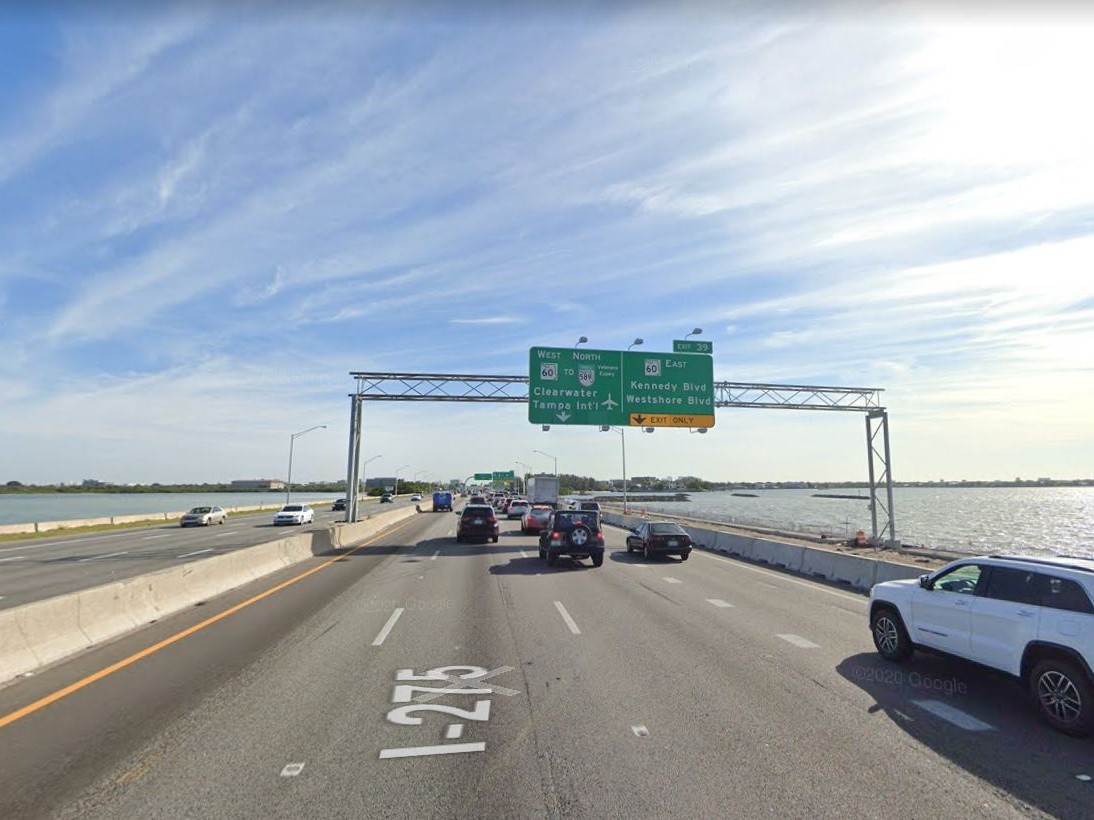
Plans call for four non-tolled general-use lanes, two tolled express lanes in both the northbound and southbound directions and a 12-foot shared-use path adjacent to the non-tolled lanes. The existing northbound bridge has reached the end of its serviceable life and will be demolished once the new bridge is completed.
Road construction accelerated due to light traffic during the statewide stay-at-home order issued by Florida officials to slow the spread of the virus. Work at the Howard Frankland Bridge is now four weeks ahead of schedule.
7. TAMPA INTERNATIONAL AIRPORT
The Tampa International Airport is in the midst of a renovation and expansion. When air travel paused in the wake of the coronavirus crisis, roughly $150 million in essential projects moved forward more rapidly, preparing the airport for future growth. According to the airport’s website, TPA accelerated work on eight different projects, including widening the main entrance and exit roads, modernizing the restrooms and adding new express curbside lanes. Parts of these projects are now weeks ahead of schedule.
“The Tampa International Airport has been working on major expansion plans for a few years. They are currently building their own first office building that connects to the transportation system. There will be a second building built later,” Rohrlack said.

